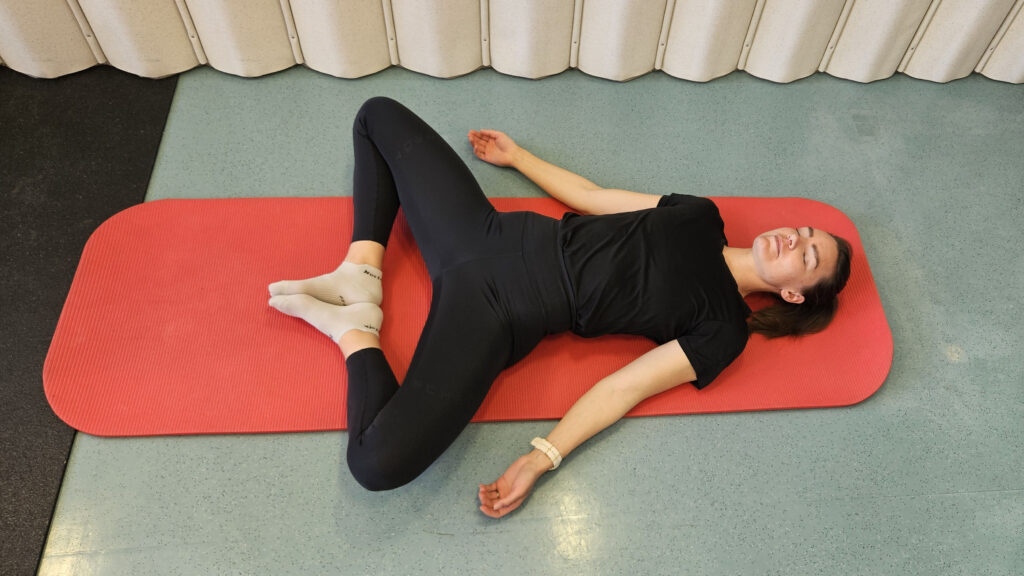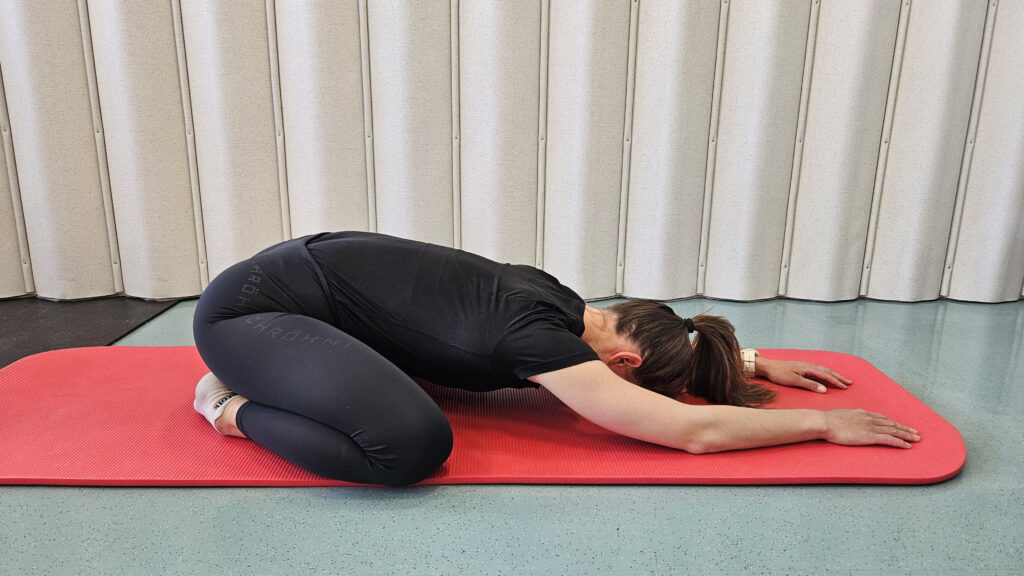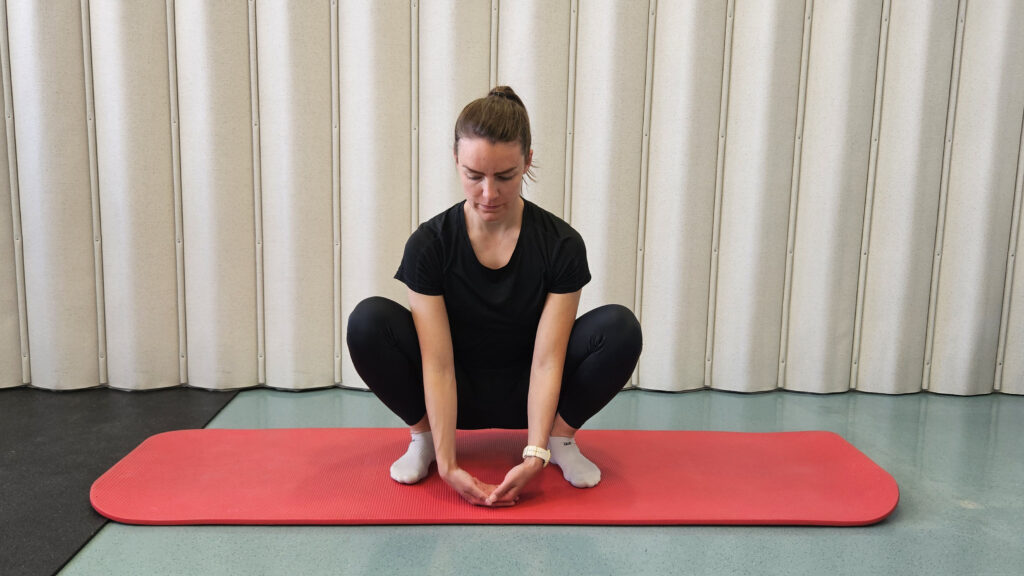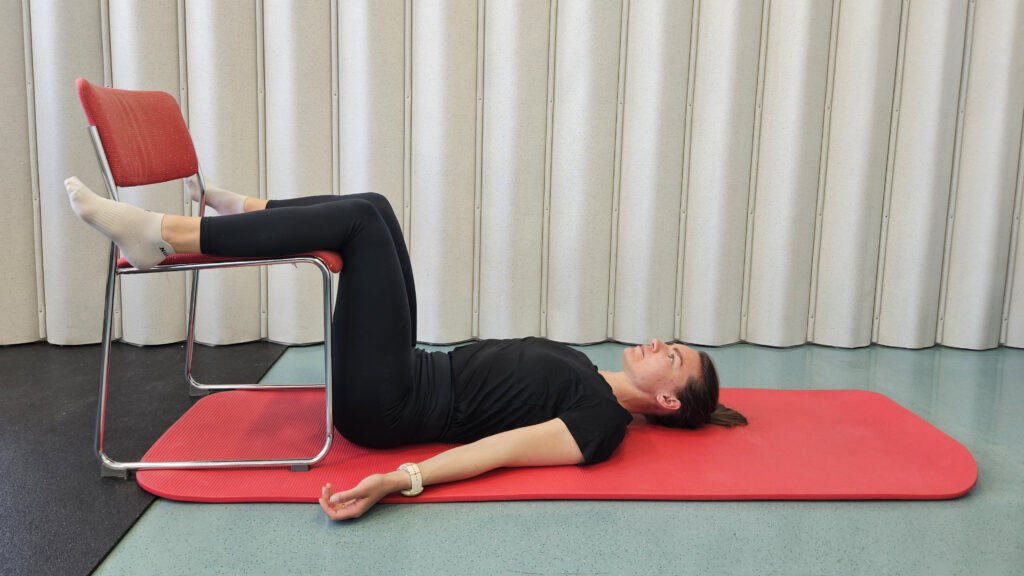Relax your pelvic floor muscles
Overly tight pelvic floor muscles can cause pain during sexual intercourse, pain in the lower abdomen and pelvis, an overactive bladder and even constipation. These instructions by FSHS physiotherapists can be used to relax pelvic floor muscles. The exercises can also be used to manage psychological stress.
Resting positions
You can relax your pelvic floor by lying down for a moment. This reduces the load on your pelvic floor due to gravity and allows your pelvic floor to move up and down with your breathing. Try to focus on relaxing as much as you can. You can stay in these positions for as long as it feels comfortable.
Butterfly position
Lie on your back with the soles of your feet against each other and your legs bent with your knees out to the sides. To help you relax, you can place pillows under your knees if necessary. Lie in this position for a while and breathe deeply in and slowly out.

Child’s position
Get on all fours, move your buttocks back and down over your feet, letting your stomach rest against your thighs. Keep your forehead on the floor and stretch your arms forward. You can turn your knees outward. Let your stomach relax. Lie in this position for a while and breathe deeply in and slowly out.

Deep squat
Get into a deep squat position. Try to be as relaxed as possible. It might help to place pillows under your buttocks or heels. Sit in this position for a while and breathe deeply in and slowly out.

Lying on your back with your legs raised
Lie on your back and lift your legs up against a wall or, for example, on a chair. Your legs can also be bent at the knees. You can use a pillow under your buttocks to further reduce the effect of gravity on your pelvic floor. Breathe deeply and slowly in and out.

